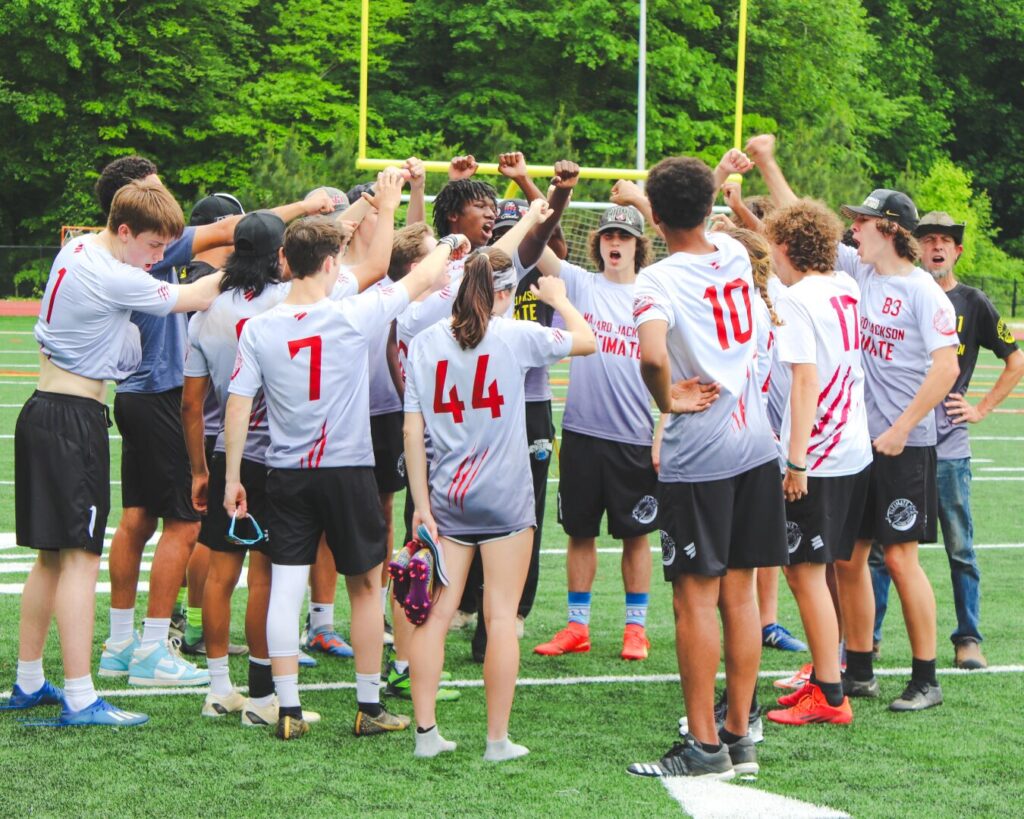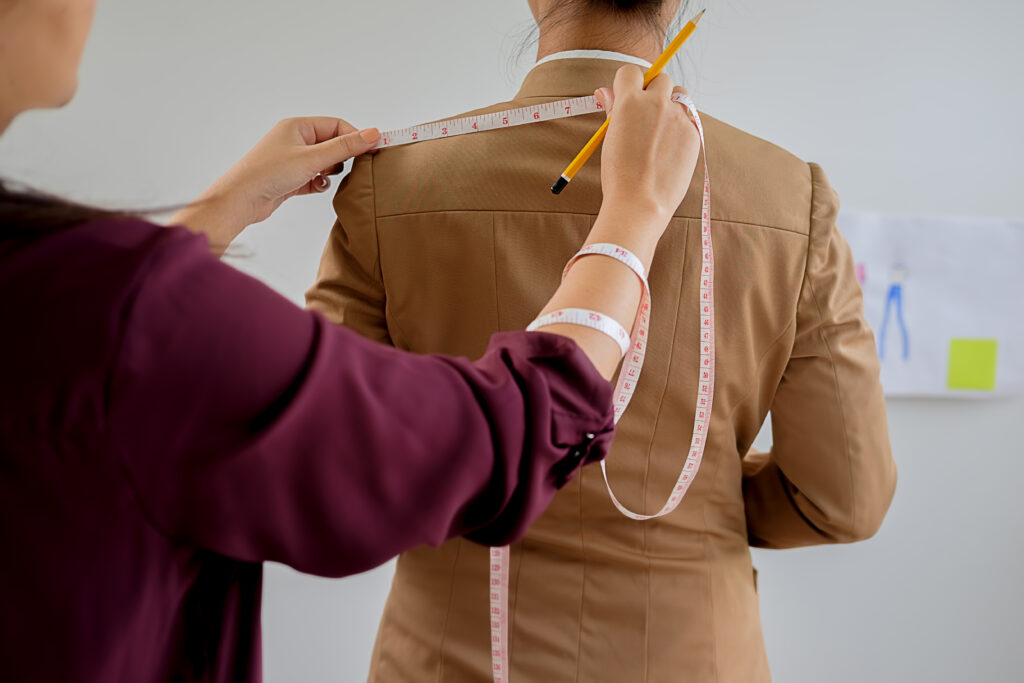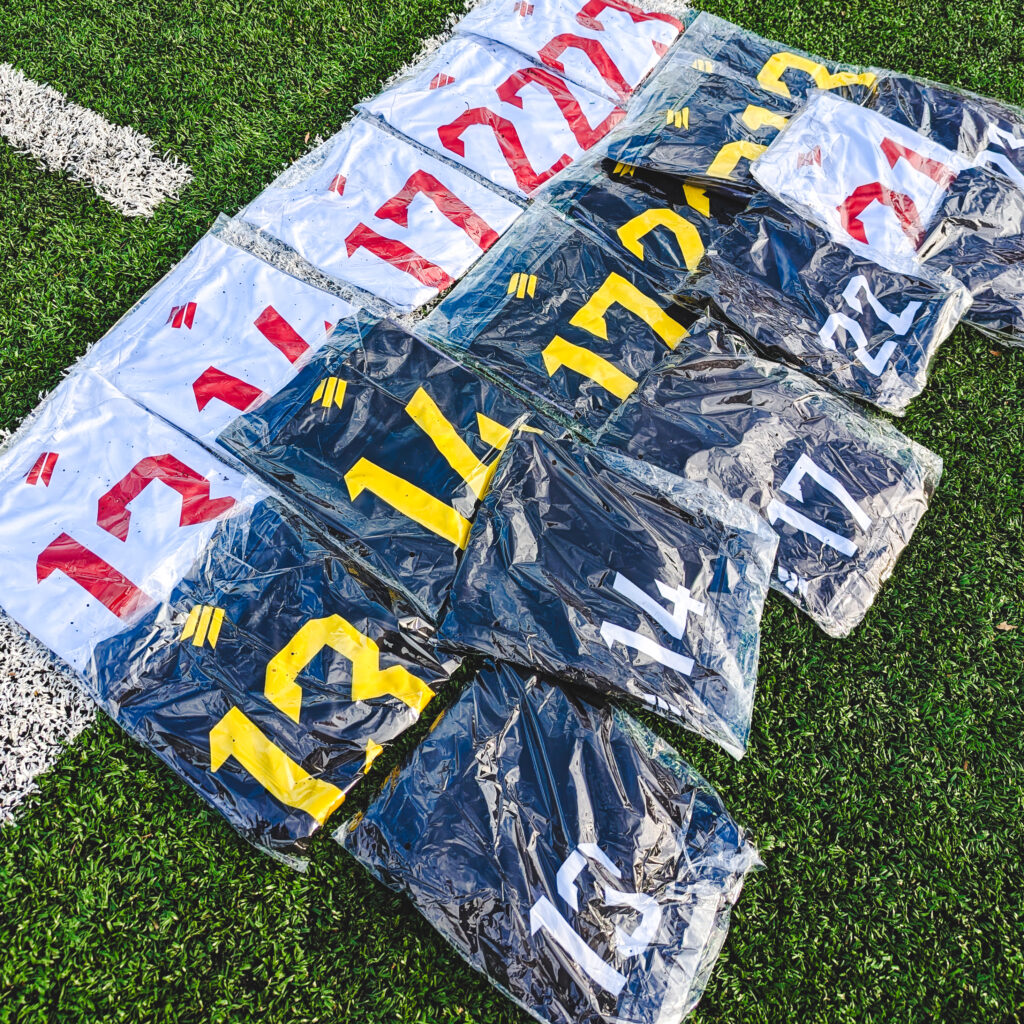
Ordering custom jerseys for your rec team shouldn’t feel complicated. With the right supplier and a clear plan, you can get quality uniforms that fit well, look sharp, and arrive on time without the stress. This guide breaks down the key steps so you can make confident decisions and avoid common mistakes teams run into when ordering custom apparel.
When searching for a custom jersey provider for your rec team, you’ll quickly face a key decision: should you go with an online vendor or a local shop? This choice affects everything from pricing to turnaround time.
Online providers typically offer more competitive pricing, sometimes 15-30% less than brick-and-mortar alternatives. This cost advantage comes from their lower overhead expenses and larger production volumes. However, the tradeoff is that your team will need to handle their own measurements, which can lead to sizing issues if not done carefully.
Local providers might charge premium prices, but they deliver personalized service that online vendors can’t match. Many local shops offer team measurement sessions where staff members take professional measurements to ensure perfect fits. As Rob Garcia, a basketball coach, explains: “The extra $12 per jersey was worth every penny when our local provider invited us in for a team fitting night. Not a single jersey needed to be returned.”
Design options represent another significant difference. Online suppliers typically offer extensive design libraries with thousands of templates and customization tools. Many provide interactive design platforms like Kit Builder where you can visualize changes in real-time. It showcases how online vendors can offer vast template libraries with advanced visualization tools.
Local providers shine when turnaround time matters. While online orders typically take 2-3 weeks plus shipping, local shops can often deliver in 7-10 days when you’re in a pinch. This can be crucial when you’ve got a tournament approaching or late roster changes.
Before committing to any apparel distributor thoroughly research their reputation. Start by checking customer reviews on Google, Yelp, and specifically sports equipment review platforms. Look beyond star ratings read detailed feedback about print quality, color accuracy, and durability after multiple washes.
Don’t hesitate to request samples before placing your full order. Many reputable vendors offer swatch books showing available fabrics and colors, or sample jerseys (sometimes at a nominal fee) so you can evaluate quality firsthand. This small upfront investment can save major headaches later.
Verify the supplier’s experience with your specific sport. A company that primarily makes basketball jerseys might not understand the specific requirements for hockey or soccer uniforms. Ask pointed questions like:
Most custom teamwear enforce minimum order requirements, typically between 8-12 jerseys per style. This presents challenges for smaller teams or those needing replacement jerseys mid-season.

When providers accept smaller orders, expect to pay a higher per-unit cost. Smaller batches often incur setup fees of $25–50 or 10–25% higher prices per jersey to cover the additional production effort.
Some strategies for teams with unique requirements include:
Remember that minimum requirements often apply per design rather than total quantity. This means ordering 6 home jerseys and 6 away jerseys might not qualify if the vendor’s minimum is 8 per design.
When selecting jerseys for your rec team, the sport you play significantly influences your options. Football jerseys typically feature looser fits with reinforced shoulders, while basketball jerseys are sleeveless with moisture-wicking properties. Soccer jerseys balance breathability with durability, and baseball jerseys come in button-up or pullover styles. Before making your selection, research sport-specific features that will enhance your team’s performance.
Material quality can make or break your team’s experience. Look for performance fabrics that offer:
Weather conditions should heavily influence your decision. For outdoor sports in hot climates, lightweight, breathable fabrics with UV protection are essential. Cold-weather sports might require thermal underlayers or heavier jersey materials. Indoor sports teams can focus more on breathability and freedom of movement rather than weather resistance.
Color selection goes beyond personal preference, it defines your team’s brand. Start by considering:
The placement and size of your logo dramatically impact jersey’s appearance.

Front-center placement makes the strongest statement, while chest placement (left or right) offers a more professional look. Design experts recommend that logos shouldn’t exceed 40% of the front jersey space to avoid overwhelming the design.
Typography choices for player names and numbers may seem minor, but they significantly impact both aesthetics and functionality. Select fonts that:
Player names and numbers require strategic decisions. Consider:
Many rec teams incorporate sponsor logos to offset costs. When integrating sponsors, maintain visual harmony by:
Special design elements add character to your uniforms. Consider:
These thoughtful touches can strengthen team identity and unity while creating a professional appearance that players will wear with pride.
Getting your team’s sizes right is crucial to avoid the disappointment of ill-fitting jerseys on game day. Most sizing disasters can be prevented with proper planning and clear communication.
Start by downloading and distributing detailed size charts from your preferred teamwear. These charts should include both numerical measurements and sizing recommendations based on height and weight. They provide comprehensive sizing guides that help players determine their best fit.
When collecting sizes, you have two main options:
Team measurement session: Schedule a pre-practice or post-practice session where one or two designated people measure everyone using the same tape measure. This approach ensures consistency but requires coordination.
Self-reporting with guidance: Email detailed instructions to players with photos showing exactly how to measure (chest, shoulders, sleeve length). Request that measurements be taken wearing similar clothes to what they’ll wear under the jersey.

Pro tip: Always size up when in doubt. Most players prefer slightly loose jerseys over tight ones, especially for team sports requiring free movement. Remember that some performance fabrics may shrink slightly after washing, so account for this by ordering 1/2 to 1 full size larger for cotton-blend jerseys.
Ask players about their fit preferences too. Some prefer a tighter “performance fit” while others want a looser “relaxed fit.” Goalkeepers in soccer or hockey may want roomier jerseys to accommodate padding.
Once measurements are collected, create a master spreadsheet with all essential information. Include:
Using a cloud-based spreadsheet allows real-time updates and sharing with assistant coaches or team managers for verification. TeamSnap and similar team management platforms offer templates specifically designed for uniform ordering that can streamline this process.
Before submitting your order, double-check everything. Send each player their individual information for confirmation. This extra step catches many potential errors before production begins.
For late roster additions, establish a clear cutoff date aligned with your teamwear’s timeline. If players join after the deadline, have a plan ready – whether ordering individual jerseys (potentially at a higher cost) or having a few extra jerseys in common sizes.
Once your order is submitted, you’ll typically receive digital design proofs for approval. This critical stage is your last chance to catch errors before production.

When reviewing proofs, look carefully at these specific elements:
Share the proofs with assistant coaches or team captains for additional verification. Many teams make the mistake of rushing this step, only to regret it later.
If changes are needed, clearly document each correction needed and confirm the vendor has received and understood your feedback. Request revised proofs before giving final approval.
Custom jersey pricing can get complicated quickly. Most providers break down costs into base prices and add-on fees. The basic jersey might cost $20–30, but once you add names, numbers, and logos, that price can easily reach $40–60 per jersey.
Base pricing typically covers the blank garment and sometimes a single-color front print. Additional elements like back numbers ($5–8), player names ($5–7), or custom logos (often a setup fee of $50–100 plus $3–5 per jersey) add to the total cost.
The good news is that quantity discounts can save your team money. Many vendors offer price breaks at certain thresholds:

For teams looking for a more budget-friendly option, we also offer pre-made design apparel. These come in limited color and design choices but still allow you to add names, numbers, and logos, and they usually come with a much faster turnaround compared to fully custom designs.
Be aware of hidden costs that can blow your budget. Premium moisture-wicking fabrics might add $5-10 per jersey. Sublimation printing (which allows unlimited colors and designs) typically costs more upfront but includes all customization. Rush production can add 25-50% to your total cost. Check the website for transparent pricing examples across different sports and customization levels.
Getting payments from players can be as challenging as organizing practice attendance. Digital payment methods have made this much easier:
Always set payment deadlines at least 7-10 days before your vendor requires payment. This gives you buffer time to chase down late payments. Be crystal clear about the total cost per player, what it includes, and when payment is due.
Most teamwear require a 50% deposit to start production and the remaining balance before shipping. To avoid issues, collect full payments from players before you place the order. We also provide simple payment schedule templates to help teams stay organized and on track.
Local businesses can be excellent sponsors for recreational teams, often covering 50-100% of jersey costs in exchange for logo placement. Start by approaching businesses with connections to team members – employers, family businesses, or frequently visited local establishments.

Create tiered sponsorship packages:
When approaching potential sponsors, bring a mockup showing exactly how their logo will appear. Explain the exposure they’ll receive (number of games, tournament appearances, social media mentions). Always deliver what you promise – send sponsors team photos wearing the jerseys and tag them in social media posts. Remember that many businesses budget for local marketing annually, so approach them 2-3 months before you need the funds.
Getting your custom jerseys in time for the season requires careful planning. Most vendors need 2-4 weeks for standard production from the time your design is approved to when jerseys ship. This timeframe includes material preparation, printing, cutting, sewing, quality checks, and packaging.
Don’t cut it close! One of the most common mistakes team managers make is underestimating how long the entire order process takes. Research of production guide shows that 35% of first-time team jersey orders are placed too late, resulting in rush fees or missed deadlines.

Be aware of seasonal bottlenecks that can affect your timeline:
If you’re ordering during these peak times, add an extra week to expected delivery times. Rush orders are typically available but come at a premium, often 25-40% more than standard pricing. Some vendors offer rush production that can cut turnaround to 7-10 days, but verify whether this includes shipping time.
Smart team managers build in buffer time at least two weeks before your first game or team photo day. This cushion allows for addressing unexpected issues like production delays, shipping problems, or needed corrections.
Once your order enters production, most reputable vendors provide visibility into your order’s progress.

Under Armour’s team sales division recommends checking for these key production milestones:
Don’t hesitate to ask for status updates if your vendor doesn’t proactively provide them. Weekly check-ins are reasonable during a 3-4 week production timeline. Be alert to red flags that might indicate potential delays:
When your jerseys arrive, don’t immediately distribute them! Set aside 30-60 minutes to:
For distribution, create a simple checkout system to track who has received their jersey. Many team managers organize a dedicated “jersey night” at practice or set up specific pickup times.
Despite careful planning, issues can still happen. At Edgy Sport, the best practice is to document any problems with clear photos and reach out right away so the team can resolve them quickly. Most reputable vendors follow similar guidelines:
With proper planning and management, getting your team looking sharp in matching custom jerseys can be a smooth process that builds team identity and pride.
Ordering custom jerseys becomes much easier when you plan ahead, stay organized, and partner with a provider you can trust. With the right approach, your team can get uniforms that look great, fit well, and arrive on time without added stress.
If you’re looking for a teamwear that offers practical benefits like no MOQ, quick turnaround, and straightforward customization, Edgy Sport is worth considering for rec teams that want a simple, reliable ordering experience.